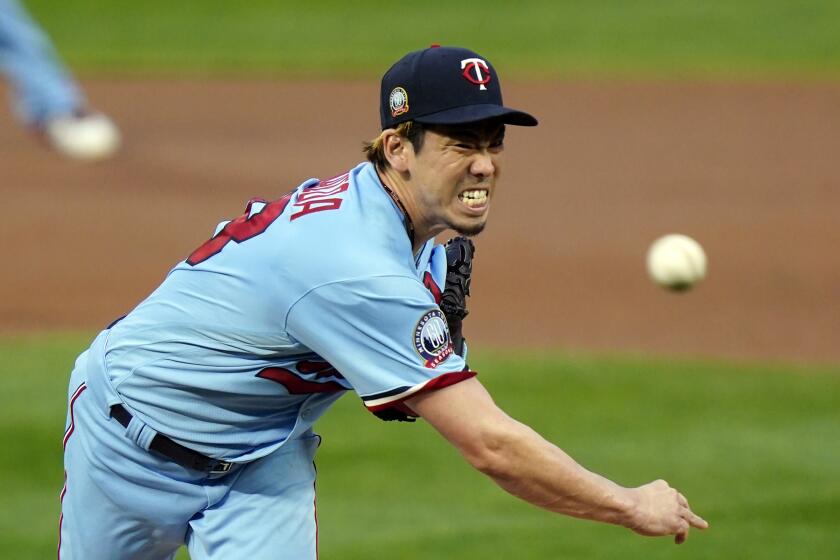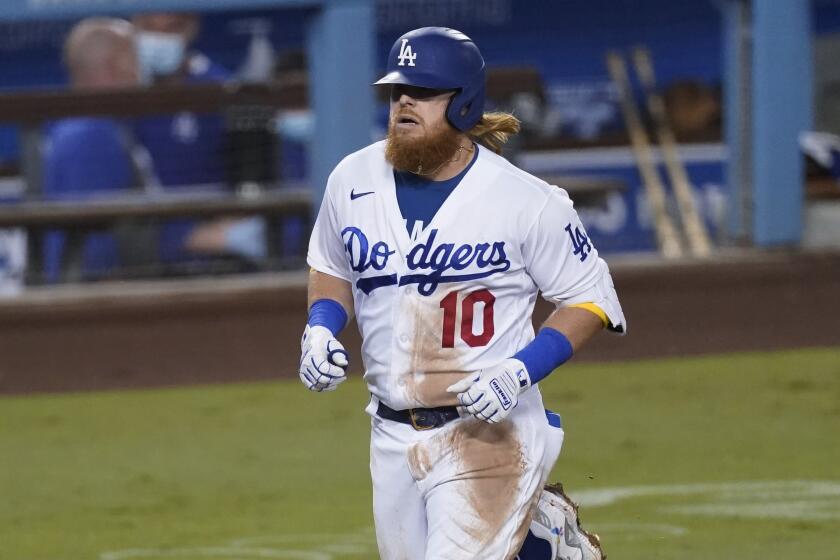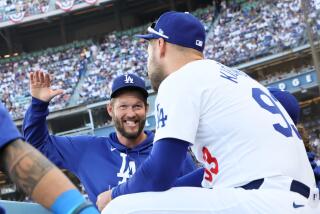Column: Clayton Kershaw still has time to exorcise the demons of Octobers past
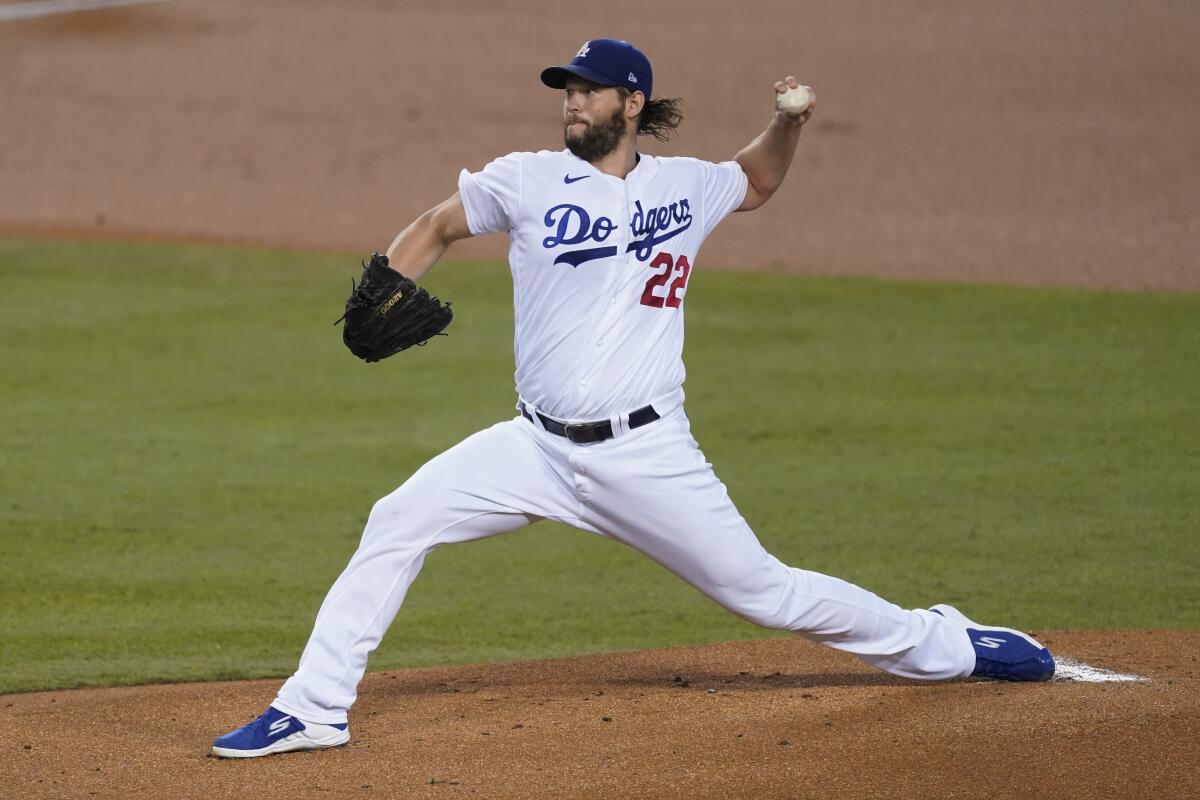
- Share via
Clayton Kershaw can still have his moment. He can still retrieve the glory that was stolen from him.
There is still time.
The gears in the clock are rotating backward. The sand is trickling from the bottom of the hourglass to the top.
Kershaw is about to get a postseason do-over, not as a faded legend, but as one of the top pitchers in baseball.
On Friday night, the 32-year-old Kershaw made his final start in a pandemic-shortened regular season that marked his renaissance. His performance in the Dodgers’ 9-5 victory over the Angels was an aberration, as he was charged with four runs in just four innings.
He nonetheless finished the season with a 6-2 record in 10 starts, along with a 2.16 earned-run average that ranks fifth in the National League.
Those are the kinds of numbers he used to post when he was in his 20s.
The Dodgers could be as dependent on Kershaw as they were back then, as the shortcomings of their rotation have prompted them to explore the possibility of opening some of their postseason games with a reliever.
The Dodgers are trying to decide on a starting pitcher for Game 3, while three of their former starters are in the playoffs with new teams
With Walker Buehler recovering from a blister on his pitching hand, Kershaw isn’t just their most reliable starter.
He’s also their best.
If the Dodgers win the World Series, he won’t be the baseball equivalent of John Elway winning Super Bowls in an offense built around Terrell Davis.
Kershaw remains the centerpiece of this rotation.
What better way to erase the unpleasant memories of Octobers past? What better way to make up for the championship that was hijacked by the sign-stealing Houston Astros in 2017?
Fair or not, Kershaw continues to be defined by his postseason failures. Disclosures about the Astros’ cheating didn’t change that.
He was the goat — and not the good kind of G.O.A.T. — when the Dodgers were eliminated by the Washington Nationals in their National League Division Series last year. With the Dodgers ahead by a couple of runs in the eighth inning, Kershaw gave up home runs on consecutive pitches in a relief appearance. The Nationals went on to win the game in extra innings. In aftermath of the defeat, Kershaw conceded that he deserved the criticism directed at him for his postseason meltdowns.
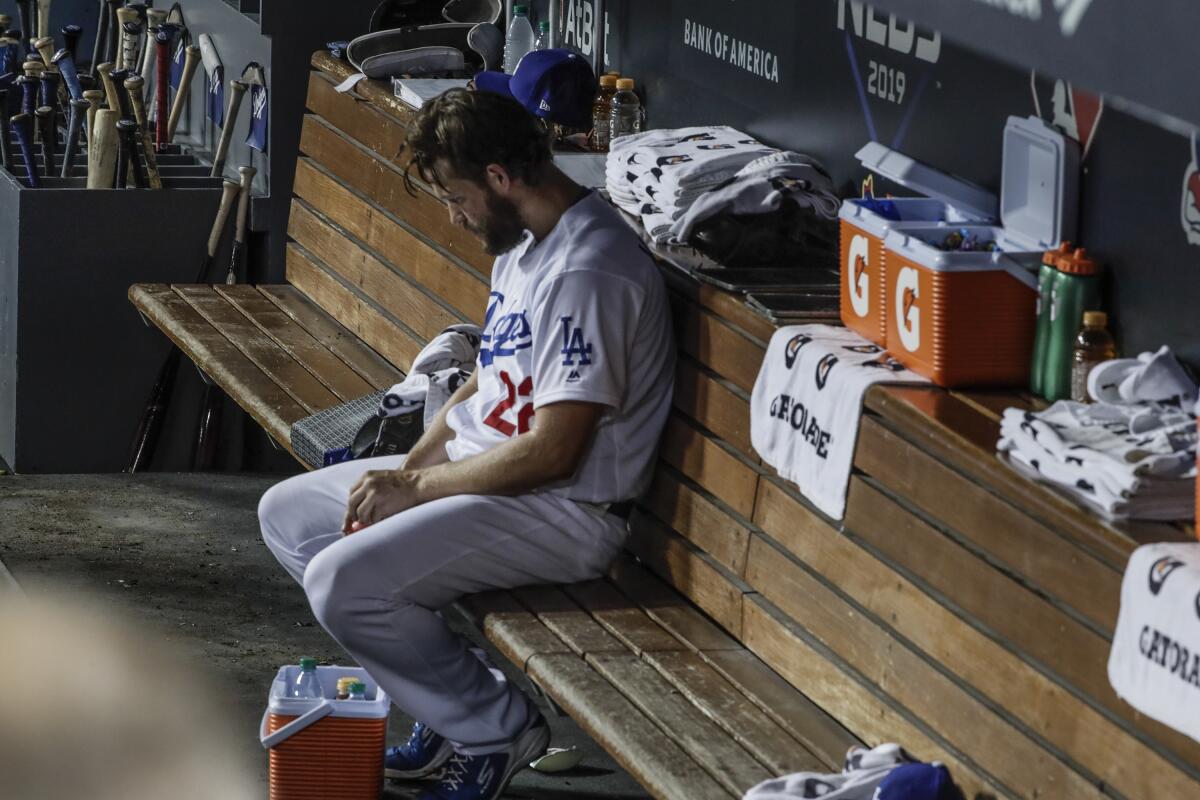
But he also made a promise.
“I’m not going to hang my head,” Kershaw said. “I’m going to be here. I’m going to continue to try to fight, continue to try to compete.”
Did he ever.
His ERA this season was his lowest since 2016.
There was a fountain-of-youth element to his bounce-back season, as his average fastball velocity was more than a mile an hour faster than it was last year.
But there was more to it than that.
“You say turn back the clock and there is a velocity component,” manager Dave Roberts said. “But I’ll tell you this: For me, the biggest thing is his openness to sequencing and using his entire pitch mix.”
The Angels received a break when the Astros lost earlier Friday, but they couldn’t hold the Dodgers in check and lost 9-5, ending their playoff hopes.
From the outside, Kershaw looked to be in decline over the last couple of years. In some ways, he was. But he was also evolving, as Roberts said he started to incorporate advice from the front office on when to throw which pitches.
“He has a plus fastball when you [consider] the command,” Roberts said. “He has a plus slider and a plus curveball. So, now, he is percentage-wise more even distributing those pitches, which is making him as effective as he’s always been. That’s just a credit to him.”
Compared with the last couple of seasons, his strikeouts per nine innings were up. His walks and hits allowed were down.
His newfound unpredictability also helped him give up fewer home runs. Last season, he served up 28 homers in 28 starts. Entering Friday night, Kershaw had allowed only one home run in his previous five starts.
The game against the Angels on Friday was unusual in that regard, as he gave up a three-run home run to Mike Trout in the third inning and a solo blast to Justin Upton in the fourth.
The Dodgers clinched home-field advantage throughout the postseason, but most players won’t be living at home even for the wild-card round.
A couple of winters ago, the Dodgers signed Kershaw to a three-year, $93-million extension.
The new contract was viewed as a rare instance in which they made a decision that was based on sentimentality rather than analytics. The perception at the time was that they agreed to pay him $31 million a season because they didn’t want him to wear another team’s uniform, not because they expected him to perform like a $31-million-a-year pitcher.
Look at what’s happened. Kershaw has become a $31-million pitcher again. And he could be on the verge of becoming something more, something he’s never been before: an October hero.
More to Read
Are you a true-blue fan?
Get our Dodgers Dugout newsletter for insights, news and much more.
You may occasionally receive promotional content from the Los Angeles Times.

